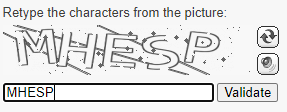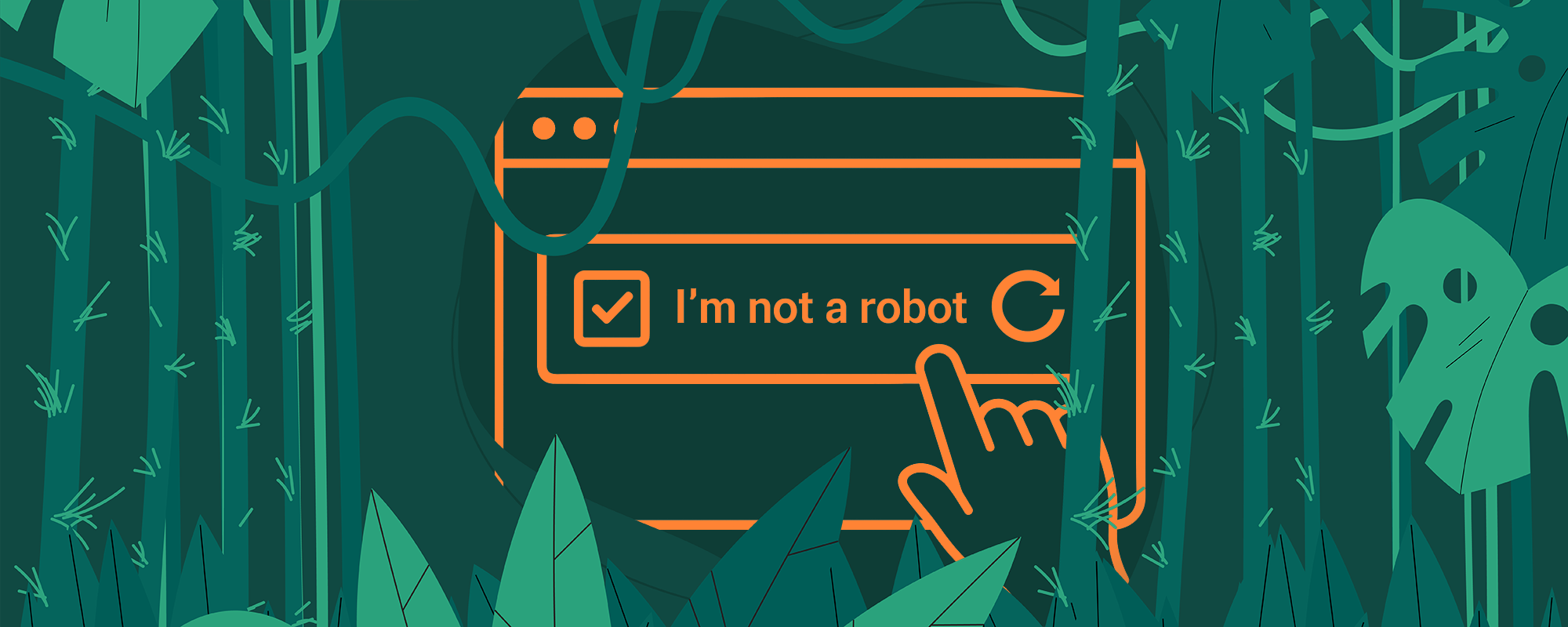What is a CAPTCHA?
CAPTCHA stands for Completely Automated Public Turing test to tell Computers and Humans Apart. Its purpose is simple: allow websites to determine whether the incoming visitor is:
- a real human
- or a bot/machine trying to imitate one
Early CAPTCHAs from the late 1990s and early 2000s relied on distorted text: humans could read it, but early OCR systems struggled. Those days are gone. Modern CAPTCHAs rely much more on behavioral analysis, risk scoring, and machine learning, not on reading weird letters.

What Are CAPTCHAs Used For?
CAPTCHAs help websites detect and stop:
- fake account creation
- automated login attempts and brute-force attacks
- comment spam and phishing campaigns
- bot-driven fake news propagation
- mass ticket or sneaker purchasing
- repetitive automated voting in polls
- malicious scraping or data harvesting
A single bot can perform thousands of actions per minute. CAPTCHAs slow them down or block them completely, often without humans ever noticing.
How Do CAPTCHAs Work?
Traditional CAPTCHAs relied on visual complexity, but modern CAPTCHAs use behavioral analysis, machine-learning risk scoring, and device profiling. A CAPTCHA may be triggered when:
- your browser fingerprint looks inconsistent or manipulated
- your IP or proxy network is suspicious
- you perform actions too quickly
- you lack browsing history or cookies
- automation frameworks like Selenium or Puppeteer are detected
- mouse movements or touch patterns look robotic
In other words: CAPTCHAs are not only about puzzles, they are about evaluating how “human” your behavior and environment appear.
CAPTCHA Types and Examples
Text CAPTCHA
The classic: distorted letters and numbers the user must type. Still used, but easy for modern bots and OCR to solve.
Image CAPTCHA
Users must identify objects in grid images (traffic lights, hydrants, buses). Google famously uses Street View imagery and AI to generate these.

Audio CAPTCHA
Designed for accessibility. Users listen to a sequence of words or numbers and type them.

Time-Based CAPTCHA
If a form is submitted unrealistically fast (e.g., 0.2 seconds), it’s likely automated and triggers a test.
reCAPTCHA v2 (“I’m not a robot”)
Users click a checkbox. Behind the scenes, Google analyzes:
- mouse movement smoothness
- cursor momentum
- click timing
- browser fingerprint
- cookies
- login state
- historical browsing signals
A real user’s mouse path is organic; bots generate linear or overly perfect curves.
Invisible reCAPTCHA & reCAPTCHA v3
No puzzle at all. Users might not even see it. The system assigns a risk score between 0.0 and 1.0 based entirely on behavior.
Modern Alternatives: hCaptcha and Cloudflare Turnstile
In recent years, several new CAPTCHA providers have gained significant traction, especially as many companies seek alternatives to Google.
- hCaptcha: privacy-focused, widely used on forums, payment pages, and even NFT platforms.
- Cloudflare Turnstile: frictionless, mostly invisible, minimal user interaction, built around behavioral and cryptographic checks.
- Arkose Labs: advanced bot-fraud prevention, challenge-based, used by banks and enterprises.
CAPTCHA Market Share Statistics (2024–2025)
Several sources show similar patterns, but all agree on one thing: reCAPTCHA still dominates, though competition is growing fast.
- In the US, around 11.2% of all websites use a CAPTCHA system.
- Among them:
- Google reCAPTCHA has about 94.7% share
- hCaptcha around 4.3%
- Cloudflare Turnstile roughly 1.3%
- According to BuiltWith, reCAPTCHA is used on 10+ million websites worldwide.
- Some global analyses show reCAPTCHA still above 99% market share, but this number is shrinking each year as hCaptcha and Turnstile expand.
The landscape is no longer "Google vs nobody".
Modern Behavioral Analysis, Not Just Puzzles
A crucial aspect of modern CAPTCHAs is how they evaluate:
Mouse Movements
Real human cursor movement is:
- uneven
- jittery
- curved
- velocity-changing
Bots often produce:
- straight lines
- perfect Bézier curves
- instant clicks
- identical movement patterns
This is one of the strongest detection signals.
Touchscreen Behavior
Mobile users have:
- acceleration curves
- micro-jitters
- pressure patterns
- edge-swipes
- scroll rhythm
Most bots do not.
Browser Fingerprinting
CAPTCHA systems compare:
- WebGL output
- Canvas fingerprint
- Audio fingerprint
- User Agent consistency
- Platform, timezone, language
- Font lists
- Hardware acceleration
- Presence of automation APIs
If anything looks “too perfect” or “too inconsistent”, a challenge is triggered.
IP and Network Risk
Shared proxies, cheap datacenter IPs, TOR nodes, or VPN endpoints commonly trigger CAPTCHA checks.
What Triggers a CAPTCHA?
You may see a CAPTCHA when:
- using an automation framework (Selenium, Puppeteer, Playwright)
- rotating IPs or using a proxy network
- having no history, no cookies, or no Google login
- your browser fingerprint looks fake or modified
- you submit forms too quickly
- your behavior is unusual or too machine-like
Websites try not to bother real users. CAPTCHA appears only when something in the request seems off.
How to Prevent CAPTCHAs?
From a scraping or multi-accounting perspective, the goal is to avoid detection:
- Use realistic browser fingerprints.
- Avoid inconsistent manipulation.
- Ensure cookies and history appear natural.
- Simulate natural mouse movement and typing.
- Maintain believable time delays and navigation paths.
- Avoid detectable automation APIs.
- Use quality residential or mobile proxies.
Kameleo helps by generating real-like virtual browser environments, so websites cannot easily distinguish your automation from a real user.
How to Solve CAPTCHAs Automatically?
Even with perfect fingerprinting, behavior matters. Logging in instantly or autofilling forms too quickly can still look suspicious, triggering CAPTCHAs. I also noticed services where to access a certain page you must complete a captcha verification.
If automation is essential, you can use CAPTCHA-solving services via API:
Most services solve CAPTCHAs within ~20 seconds at around $0.50-$2 per 1,000 solves.
Final Thoughts
CAPTCHAs are no longer just distorted letters. They have become sophisticated detection systems analyzing your:
- device profile
- mouse movements
- scroll behavior
- typing rhythm
- browser fingerprint
- network quality
While reCAPTCHA still dominates the global market, new providers like hCaptcha and Cloudflare Turnstile are quickly becoming popular alternatives.
For scraping, automation, and multi-accounting, understanding how CAPTCHAs work is crucial. Managing fingerprints, simulating human behavior, and using realistic browser environments can dramatically reduce the number of CAPTCHA challenges you encounter.




